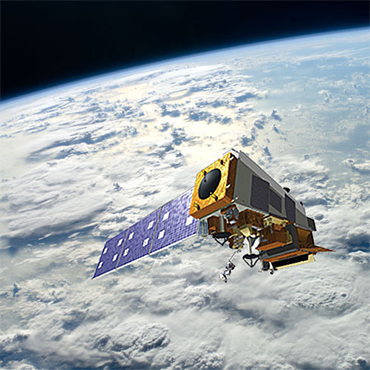NOAA on target for polar satellite launch, says agency chief

A gap in polar satellite coverage could still occur, and there is no agency estimate on how long it might last.

NOAA is on track to launch its Joint Polar Satellite System in early 2017, agency administrator Kathryn Sullivan told a House panel last week, but there is no estimate for the length of a potential gap in satellite coverage that could occur if current systems fail before the launch takes place.
"I'm not even focusing on what the best guess is, because it's all so fluid. Statistical analyses can be slanted or come up with all sorts of answers," said Sullivan at a May 1 hearing of the House Science, Space and Technology Environment Subcommittee. "I'm focusing on managing the asset we have to protract its life, and stick the launch date," she said.
NOAA is seeking a $95.4 million increase in the JPSS-1 budget for fiscal 2015, and an additional $39.9 million for its Geostationary Operational Environmental Satellite R-Series program. Overall, the agency is seeking $5.5 billion in funding.
The Government Accountability Office warned of a potential gap in polar satellite coverage in the 2013 edition of its high-risk list. Thomas Young, a former NASA scientist and chair of independent review commissioned by NOAA, said last November that despite an effective mitigation program there is still "an unacceptably high risk of a gap that could be months or years in duration."
Sullivan said that NOAA was examining what additional data sources could be added to the agency's forecasting toolkit in the event of a coverage gap, to lessen the impact on weather reporting. One of these is the Constellation Observing System for Meteorology, Ionosphere and Climate system, a partnership with Taiwan dubbed COSMIC-2, which is scheduled to deploy beginning in 2016. Sullivan said that "having COSMIC-2 on orbit providing those data was highlighted in our independent report as one of the most effective things we could do to lessen degradation in forecasts" created by a gap in polar satellite coverage.
NOAA is also facing IT headwinds from the planned sale of IBM's x86 server division to Lenovo, a Chinese tech firm. NOAA has funding in place to acquire a weather supercomputer from IBM, but the potential for Chinese ownership has raised red flags, and the procurement has not moved forward amid a review by the Treasury. In the meantime, Sullivan observed, NOAA has lagged behind European weather forecasters in some cases because of their superior supercomputing speed and performance.
NOAA recently announced the successful test of a key JPSS-1 component, the Clouds and the Earth’s Radiant Energy System, which measures light and heat reflected by the Earth for use in forecasting events such as the El Nino and La Nina weather systems.
The agency is still awaiting delivery of four principal JPSS-1 components, including an infrared imaging system, a microwave and infrared sounder that capture temperature data, and an ozone mapping tool.






